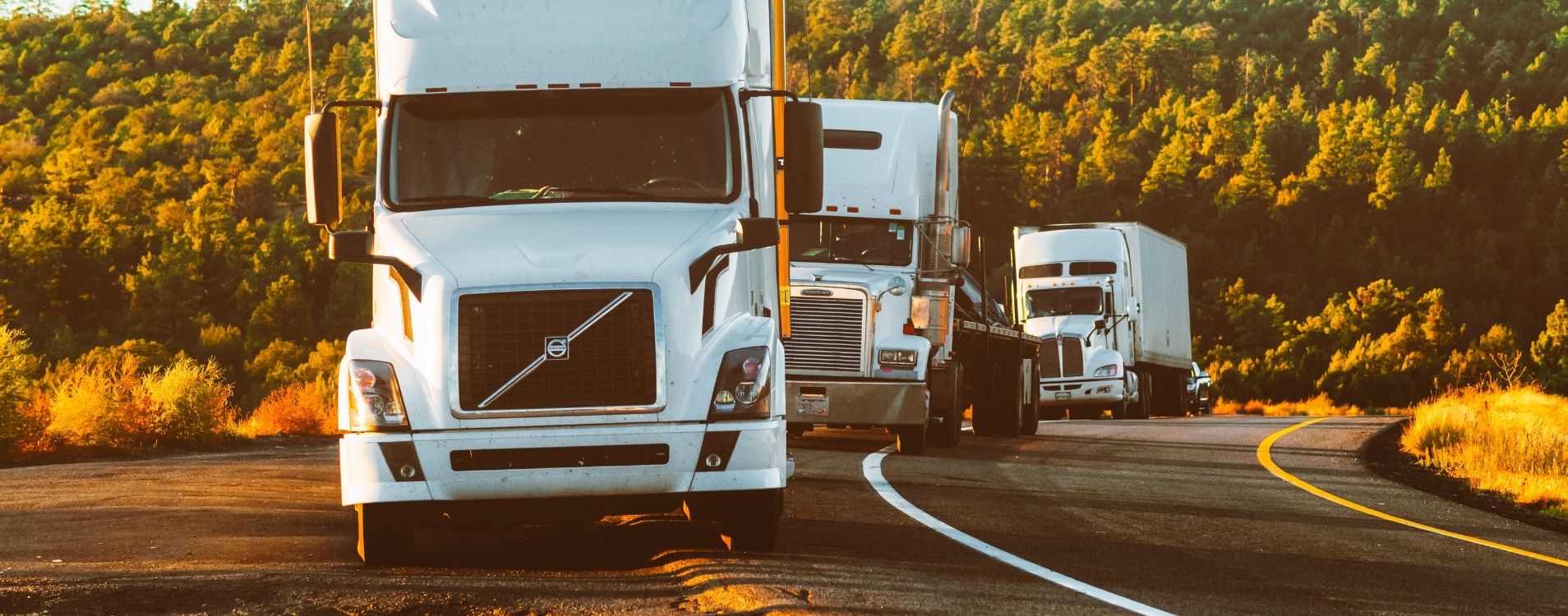What Is The Heavy Vehicle Use Tax? The HVUT FAQ
Heavier vehicles damage roads more than light ones. That’s why the government asks operators of heavy vehicles to pay more for road upkeep, in the form of an extra tax.
That tax is the result of the Surface Transportation Assistance Act of 1982. “The purpose of the tax is to impose a road use charge that has some relation to the costs caused by the vehicle,” explains a related 2010 rule from the Federal Highway Administration.
Since the Surface Transportation Assistance Act was signed into law, operators of heavy vehicles have been paying the heavy vehicle use tax, or HVUC, once per year.
What does that mean for trucking companies today? Find out with answers to your most frequently asked questions about the heavy vehicle use tax.
A Heavy Vehicle Use Tax FAQ For Trucking Company Owners
What is the heavy vehicle use tax (HVUT)?
The HVUT is a federal tax on most vehicles with a taxable gross weight of 55,000 pounds or more. That includes tractor trailers, buses, and other large commercial vehicles (although there are a few exceptions, which we’ll discuss below).
You must pay this tax for each vehicle you own, whether that’s a single truck or a whole fleet. The price varies based on weight, ranging from $100 to a maximum of $550, with increases of $22 per 1,000 pounds of weight. Here’s what the HVUT payment schedule looks like for the 2022-23 tax period:
| Taxable Gross Weight (In Pounds) | Annual Tax Rate (For Full Tax Period) |
|---|---|
| 55,000 | $100 |
| 55,001 – 56,000 | $122 |
| 56,001 – 57,000 | $144 |
| 57,001 – 58,000 | $166 |
| 58,001 – 59,000 | $188 |
| 59,001 – 60,000 | $210 |
| 60,001 – 61,000 | $232 |
| 61,001 – 62,000 | $254 |
| 62,001 – 63,000 | $276 |
| 63,001 – 64,000 | $298 |
| 64,001 – 65,000 | $320 |
| 65,001 – 66,000 | $342 |
| 66,001 – 67,000 | $364 |
| 67,001 – 68,000 | $386 |
| 68,001 – 69,000 | $408 |
| 69,001 – 70,000 | $430 |
| 70,001 – 71,000 | $452 |
| 71,001 – 72,000 | $474 |
| 72,001 – 73,000 | $496 |
| 73,001 – 74,000 | $518 |
| 74,001 – 75,000 | $540 |
| More than 75,000 | $550 |
When do I pay the HVUT?
The HVUT is kind of a strange tax. It’s not built into your other business taxes. You pay it annually, and it covers a tax period that runs from July 1 through June 30 of the following year.
The first time you pay the HVUT for a new vehicle, it’s due by the last day of the month following the first month of a vehicle’s use. After that, the tax is due August 31 every year. If you use a truck for the first time in January, the HVUT will be due by the end of February. If the truck hits the road in February, the HVUT is due in March. And so on.
But the tax period ends June 30th no matter when you start paying. You don’t have to pay the full amount if your month of first use is later than July. To figure out a partial payment, consult the table at the end of the IRS Instructions for Form 2290 (which we’ll explain in detail shortly).
At any rate, as we mentioned, your HVUT rate depends on the weight of your vehicle—and the term “taxable gross weight” can be a bit misleading.
How do I calculate a vehicle’s taxable gross weight?
Maybe your power unit only weighs 20,000 pounds. Does that make you exempt from the heavy vehicle use tax?
Probably not, because the tax isn’t based on the weight of your power unit alone. To figure out your taxable gross weight, add up the weights of the following three assets:
- The truck itself, equipped for service, including fuel and fluids
- The trailer usually attached to the truck
- The heaviest load you’re likely to haul during the tax period
For most carriers, this calculation ends up well over 55,000 pounds. In short, if you run a trucking company, you almost certainly must pay an annual HVUT. The good news is that it’s easier than ever, thanks to electronic filing.
How do I pay the HVUT?
The HVUT is a federal tax, which means you’re dealing with the IRS—and that means IRS tax forms. In this case, you’re looking for Form 2290, Heavy Highway Vehicle Use Tax Return. Find the latest form and instructions on the IRS site.
You can certainly fill out a paper form and mail it, along with a check and IRS payment voucher 2290-V, to the IRS. Here’s where to send Form 2290 with a check from a U.S.-based bank:
Internal Revenue Service
P.O. Box 932500
Louisville, KY 40293-2500
(See IRS Instructions for Form 2290 to find mailing addresses if you use an international bank, or if you’re sending in Form 2290 without a payment.)
It’s a lot easier to file and pay electronically, however. In fact, if you operate 25 or more vehicles, you have to e-file. Here are the IRS’ instructions on how to file and pay the HVUT online.
Note that the IRS makes you use commercial tax-filing software, which means you’ll probably have to pay an additional fee. That cost will vary depending on which service you choose.
What happens if I fail to pay the heavy vehicle use tax?
You have to show proof of HVUT payment (or exemption) to register a commercial vehicle in your state. The Federal Highway Administration can withhold federal funds from states if they fail to verify HVUT status, so DMVs tend to be pretty strict about it.
If you somehow manage to register or operate a vehicle without having paid the HVUT, eventually the Federal Motor Carrier Safety Administration (FMCSA) will find out you’re noncompliant. Then you’ll probably get hit with an out of service (OOS) order. That can shut down your business faster than a failed FMCSA review.
Are any vehicles exempt from the HVUT?
Yes, although few of these exemptions apply to commercial carriers or owner operators. Some whole groups are exempt from this tax. Government vehicles—state, federal, and tribal—don’t pay the HVUT. Neither do nonprofit, volunteer fire departments or the American Red Cross.
But some vehicles that might belong to a trucking company are exempt, too. If a truck travels fewer than 5,000 miles within the HVUT tax year, you don’t have to pay the tax. That mileage limit grows to 7,500 miles for agricultural vehicles. And vehicles that aren’t built to travel on highways usually don’t trigger the HVUT. Neither do vehicles used to collect blood, oddly enough.
If any of these circumstances apply to your vehicles, however, you should still file Form 2290 by the deadline. If you don’t have proof of payment, you’ll need proof of exemption to keep your vehicle registered—and IRS-stamped forms are the simplest way to show your state you’re complying with federal rules.
What if I need cash to cover HVUT payments?
If you find yourself a bit short on cash when HVUT season comes around, first off, don’t panic. File Form 2290 whether you’re ready to pay or not; you certainly don’t want to pay late-filing fees or interest. Then reach out to the IRS to work out a payment plan.
For many carriers, however, cash flow shortages aren’t due to lack of work. They’re built into the trucking industry. Shippers and brokers may take months to pay your invoices, resulting in a healthy business with an occasional cash flow problem. If that’s what’s holding you back from paying your heavy vehicle use tax, all you need is a factoring service like Bobtail.
We pay your invoices quickly—today, if you submit the request by 11 a.m. Eastern, or tomorrow for later submissions. Then we handle collecting the customer’s payment so you don’t have to. We don’t charge hidden fees or make you sign a restrictive contract. Just enter load details online or through our mobile app and get paid. It’s much simpler than taxes.




